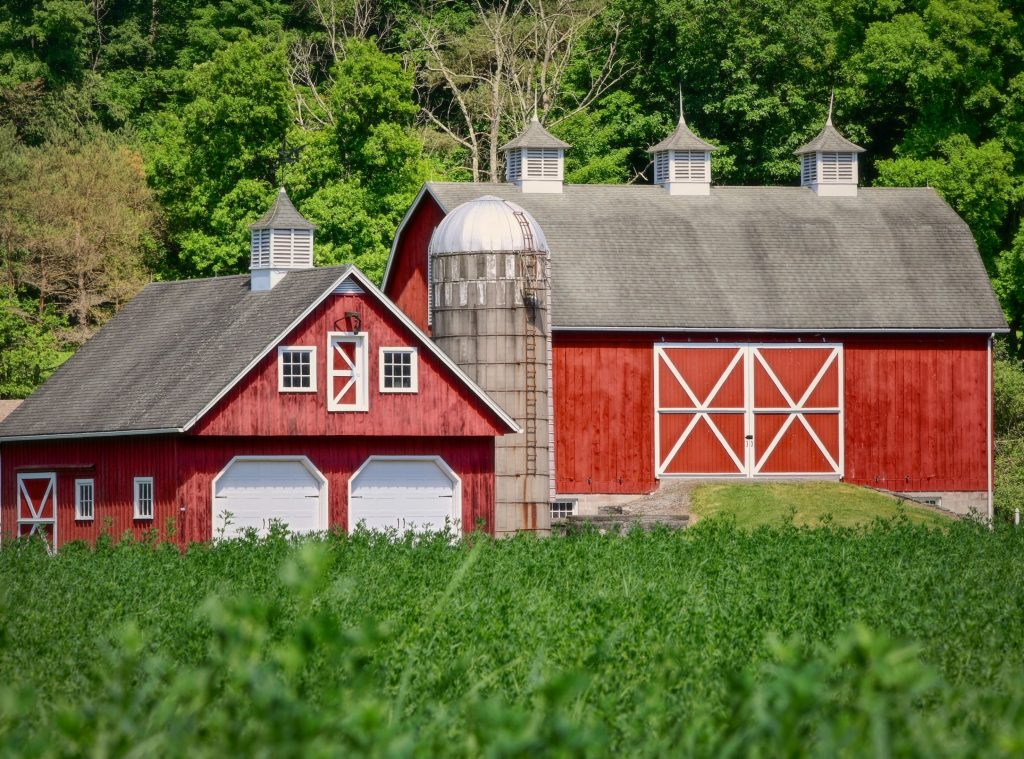Is This Land Our Land? The Future of Land Reform in the USA and Scotland

Professor Joe Goldblatt
As I entered the gigantic farm store in upstate New York I asked the sales assistant to help me find a pair of traditional farmer’s overalls. She frowned and replied “You are too small.” Indeed she was correct. Every pair of overalls I inspected was labeled as extra – large or extra – extra – large. Rather than accept defeat, I decided to further explore the future of land in the country of my birth as compared to my beloved adopted home country of Scotland.
Woody Guthrie was a revered American folk singer who inspired Scotland’s folklorist and poet Hamish Henderson. Guthrie wrote the classic and well – loved American folk song This Land is Your Land. The opening lyrics confirm that in America the land belongs to her people.
This land is your land and this land is my land
From California to the New York island
From the redwood forest to the Gulf Stream waters
This land was made for you and me.
However, in reality 60 percent of all land in America is privately owned. In contrast, The Scottish government believes 57% of rural land is in private hands (including Duke’s estates etc), with about 12. 5 percent that is owned by public bodies, 3% under community ownership and about 2.5% is owned by charities. The 25% remaining is thought to be owned by smaller estates and farms.
America has seen a dramatic decline in its rural land. US farm land declined from 914,527,657 acres in 2012 to 900,217,576 acres in 2017. The number of farms also decreased from 2,109,303 in 2012 to 2,042,220 in 2017. This decrease has serious consequences for consumers and for all of American society as the rural way of life is vanishing rapidly.
I discovered this recently when I visited upstate New York and saw new housing developments rising upon former farm land as escapees from urban areas sought the quietude and serenity of rural life. Although the homes were not the typical MacMansions I had seen in row upon row in the South and Midwest, their size and modern look appeared discordant among the land that they had now occupied. More importantly, thousands of trees were tragically removed to make way for this new housing estate.
In Scotland, although 80 percent of our land is used for agricultural purposes, the Scottish government reported that the total cattle numbers have steadily declined to a new 60 year low. Cattle numbers have been trending down since a peak in 1974 when there were 2.78 million cattle. Additionally, the National Farmers Union (NFU) Scotland said rising fuel costs and grain shortages in Scotland could mean prices going up and goods becoming scarce.
The Scottish Land Commission found that about 1,125 owners, including Highland lairds and major public bodies such as Forest Enterprise and the National Trust for Scotland, own 70% of Scotland’s rural land, covering more than 4.1m hectares (10m acres) of countryside. The Scottish Government is under major pressure to speed up land reform legislation to create a fairer, more equitable and sustainable natural environment for all citizens.
When I realised that, according to the sales assistant, most farmers were much bigger than myself in stature as well as girth, I conducted further research and quickly learned that since the era of hunter gatherers gave way to agricultural workers (farmers) I also learned that as a result of this new type of work that farmers have actually begun to shrink due to this new form of hard labour. As I am naturally shrinking due to ageing I begun to wonder how long it would be before farmers may begin to completely vanish.
The average age of a farmer in the USA is 59 and in Scotland our farmers are on average 57 years old. This is an ageing workforce that does not have many options for replacement due to the difficulty of attracting farm workers from out with Scotland and the disinterest in farming as a way of life by the heirs of our farmers.
Guthrie’s stirring anthem to the land of the USA concludes with these words.
When the sun come shining, then I was strolling
And the wheat fields waving and the dust clouds rolling
The voice come a-chanting and the fog was lifting
This land was made for you and me.
The voices are becoming more faint as the fog lifts revealing in both America and Scotland that the future of farms and land use are locking horns in a power struggle similar to the stags in the Scottish highlands. Therefore, the next time you see a new housing estate being erected upon what was once a former pasture land, ask yourself, how many times have you heard of houses being torn down to start a new farm? Once the farm and the land is gone then this land is no longer made for you nor me.
Professor Joe Goldblatt is Emeritus Professor of Planned Events at Queen Margaret University in Edinburgh, Scotland and is currently serving as Visiting Assistant Professor at New York University’s School of Professional Studies Jonathan M Tisch Center of Hospitality in New York City.

We’re on, Joe! Perfect portrait. Fortunately, our town and many, many more across the USA are saving farmland and open spaces. Unfortunately, we need to save farming, an almost insurmountable challenge given the prohibitive cost of land, the hard, hard labor of food production, and the dearth of young farmers. All this in the face of monopolistic industrial agriculture enabled by “cheap food” policies promoted by huge ag conglomerates s, etc, etc, ad infiinitum…